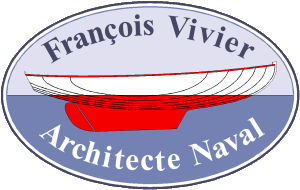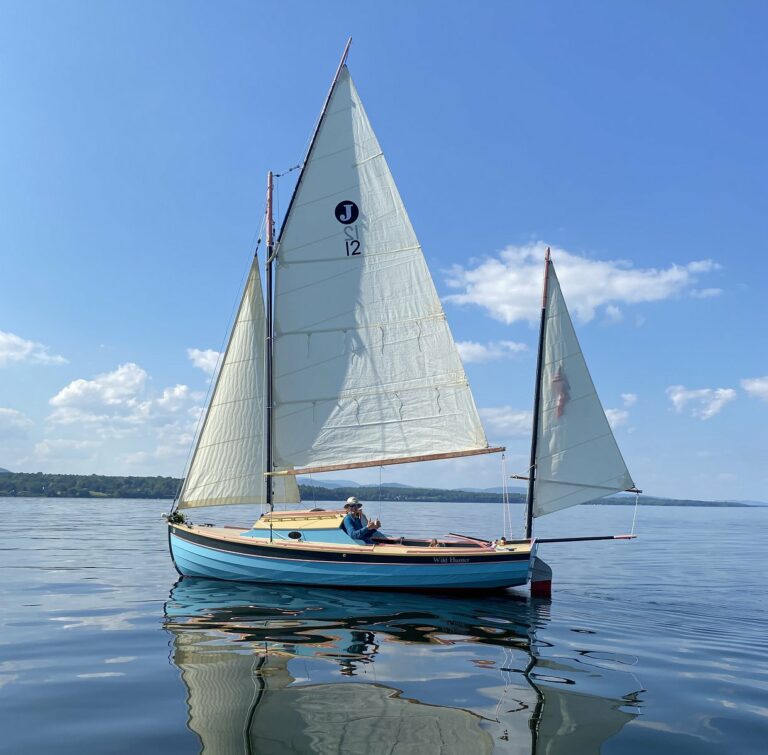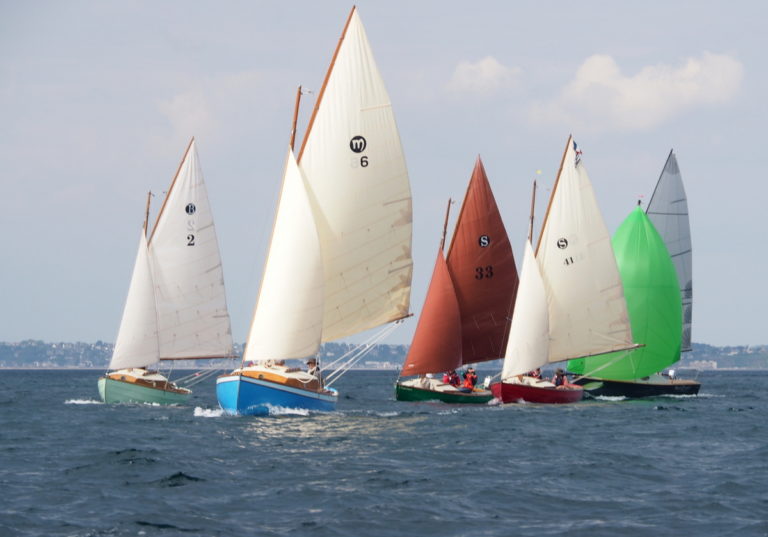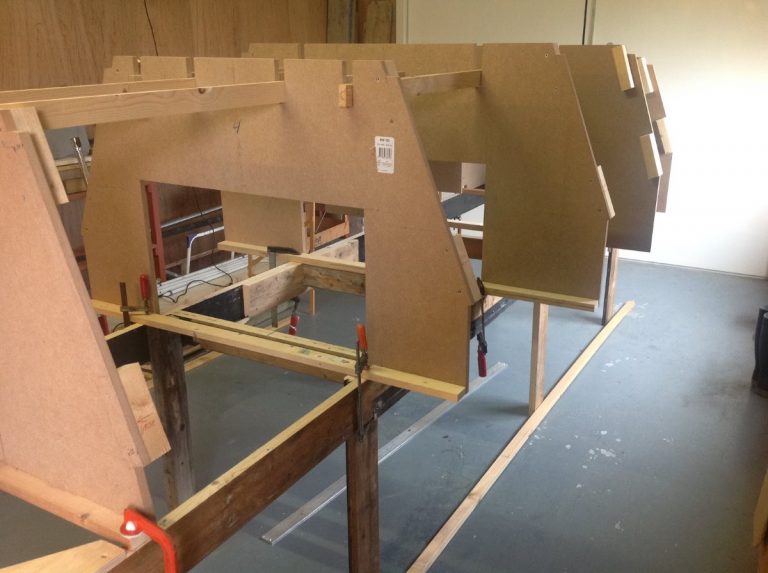Kernic, a new sail-and-oar team boat
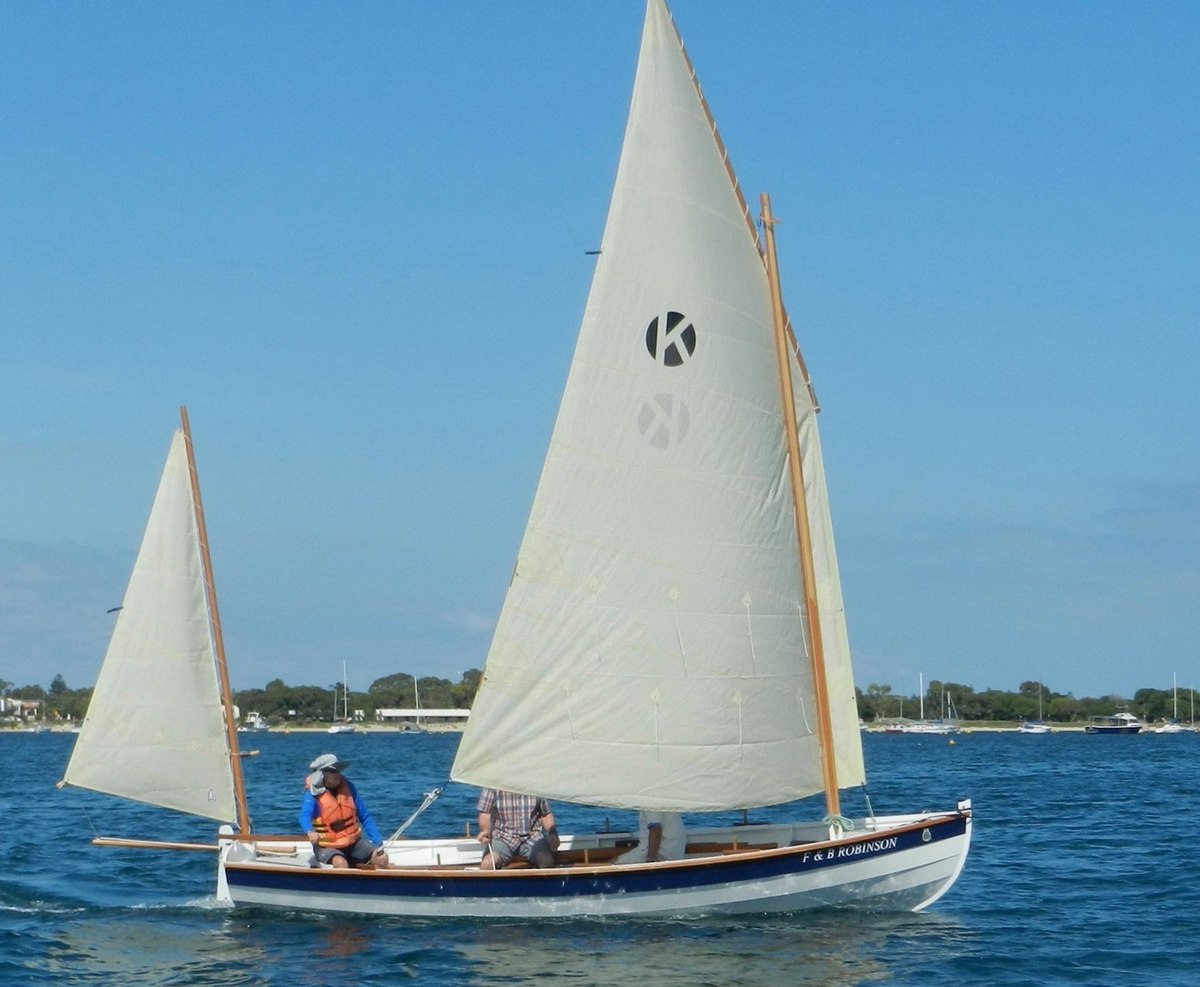
Kernic is sail-and-oar tems boat, that is to say sized for a crew of 5 to 6 people. There is 3 rowing thwarts, two rowers in the centre thwart side by side, and then one forward and one aft. This plan was asked for by my Australian partner, Tony O’Connor, located in Perth area, for sea scouts and navy cadets. The first three boats built were purely rowing, while the fourth, launched in April 2017, is rigged. I was even more motivated to design this boat than it meets a real need in France and probably in other countries, in particular for youth organisations or sailing schools.
Here is what Tony tells me after the first tests of the boat: “she sails really fast, the helm was very responsive and light, we had about 12 knots of wind with full sail and she went well, really fast too. …/… I think she would be an ideal raid type boat, I also rowed the boat by myself and she really rows well.”
Kernic was designed to be as simple as possible to build from a CNC cut plywood kit. For example, the racks for the foot stretchers are made of 3 glued layers of plywood which are placed in mortises already cut in the hull planking. Therefore, there is no adjustment to be made, no dimension to be reported. The oars themselves have plywood laminated blades, very easy to make.
The boat is very light: 190 kg for the hull, 240 kg rigged and 270 kg fully equipped with oars, anchor, mooring… It is also short, due to a plumb stem and moderately raked transom, making easy stowing and handling. This light weight, and a narrow waterline breadth, makes it an easy rowing craft. The wide transom allows fitting an outboard, as it could be useful to have one boat in a fleet with an outboard to ensure safety. The hull is clinker planked, with 9 mm plywood on sole and garboard, 6 mm for the side strakes. Sole and garboard are glass-epoxy sheathed in and out for better strength and resistance to chafe and impacts. There are no floorboards, replaced by an anti-skid paint. Watertight compartments are arranged at both ends for buoyancy, located to ease recovery after capsize. The boat complies with the ISO safety standards.
A lug yawl rig has been selected, giving an attractive look and allowing to keep the mizzen up when rowing, and reducing rolling when anchored. The designed transom rake is consistent with the mizzen mast rake.
CNC cutting files are existing and fully validated. I just need to write down building instruction for home builders. People interested in building Kernic may get in touch to agree on a delivery date.
